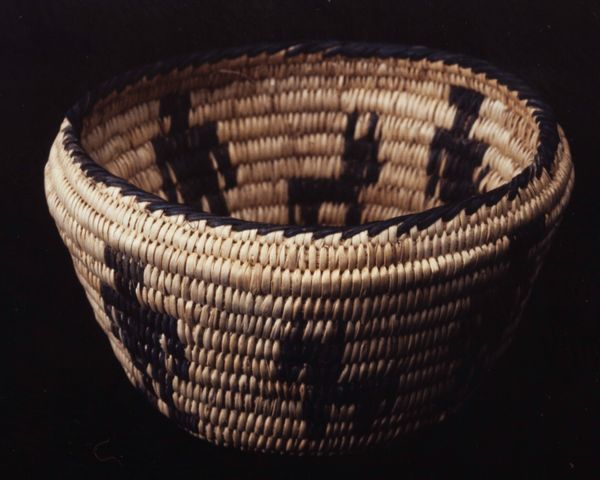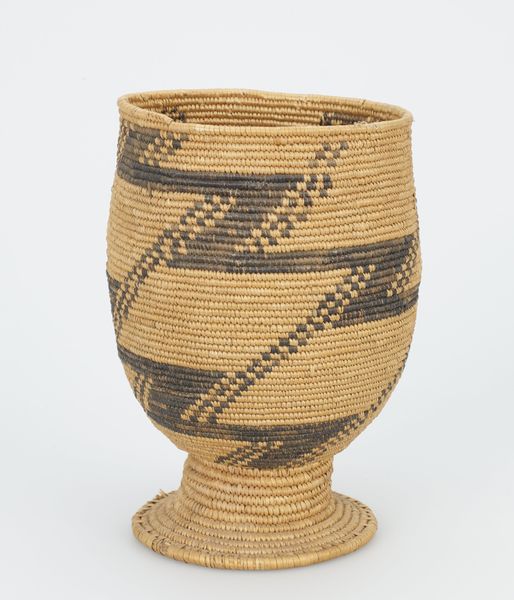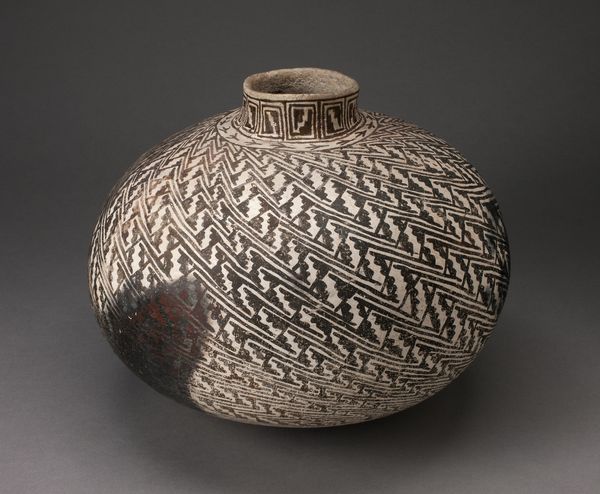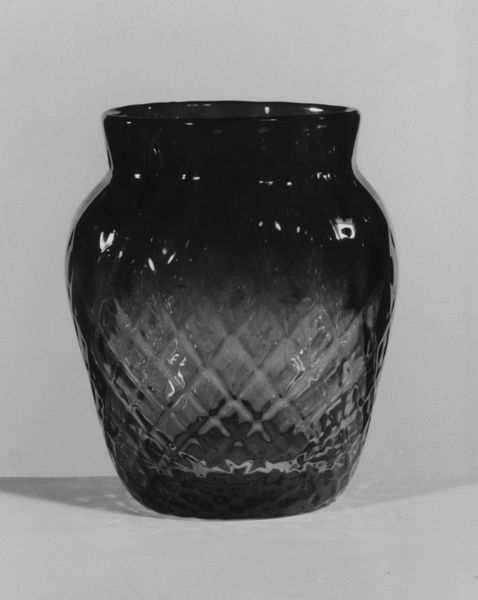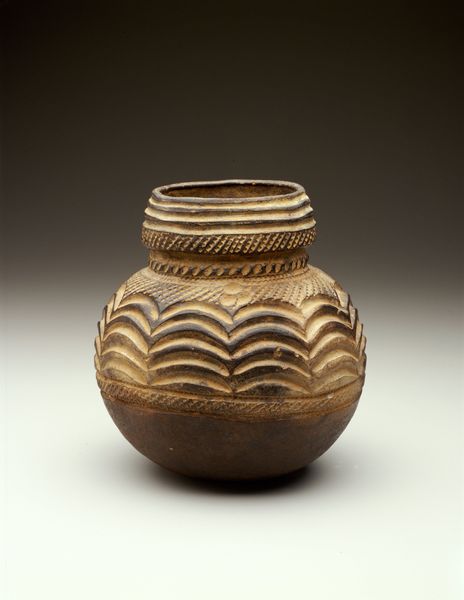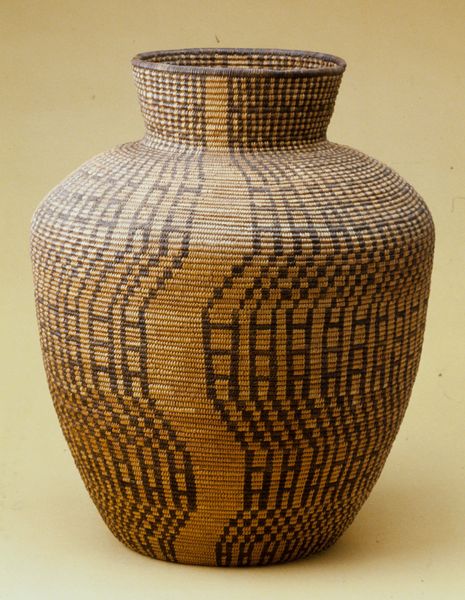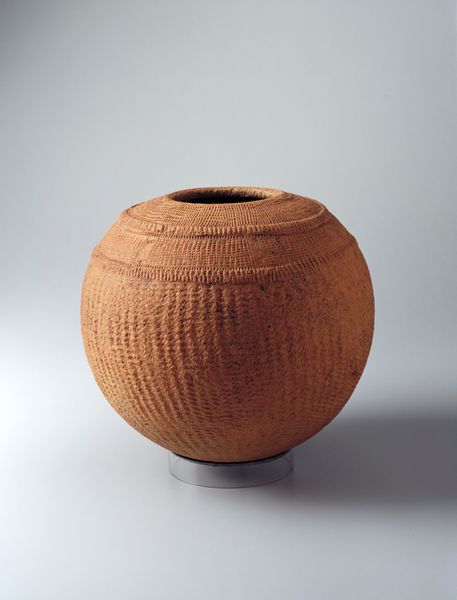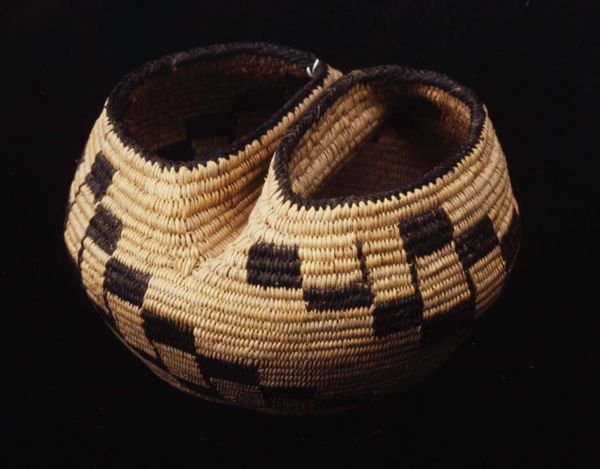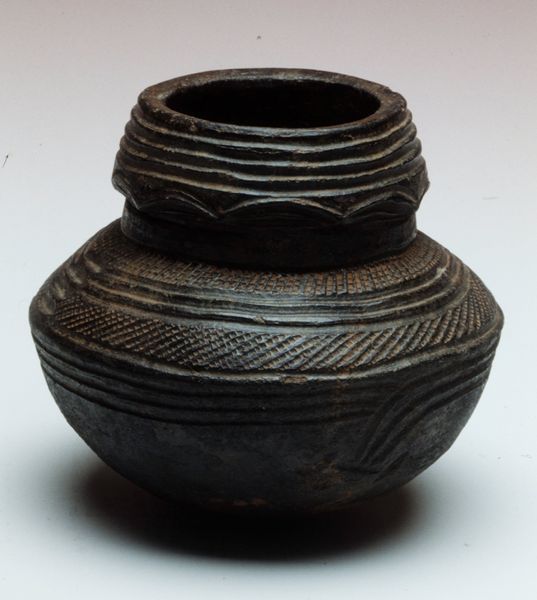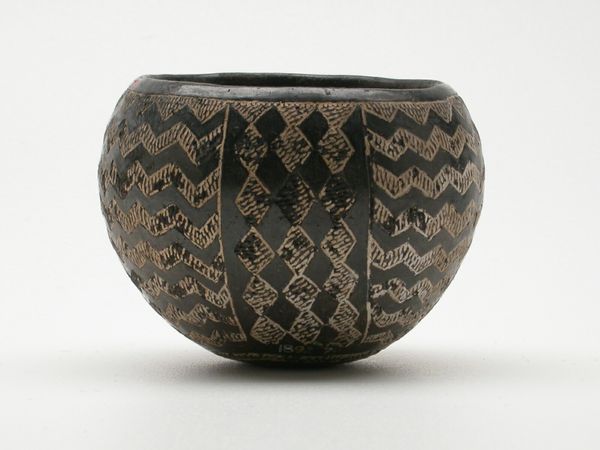
fibre-art, weaving, textile
#
fibre-art
#
sculpture
#
weaving
#
textile
#
geometric
#
decorative-art
#
indigenous-americas
Dimensions: 6 3/8 x 5 x 5 in. (16.19 x 12.7 x 12.7 cm)
Copyright: Public Domain
Curator: This object, simply titled "Basket," was created by an Indé (Apache) artist around the early 20th century. The woven fibre art is now held here at the Minneapolis Institute of Art. Editor: My first impression is its powerful simplicity; the contrasting colours create a striking visual rhythm, but something about the narrow opening and stout body suggests a kind of contained strength. Curator: Absolutely. The geometric patterns, particularly those repeating, almost lightning-bolt shapes, are deeply significant in Apache culture. We must understand that the function of a basket goes beyond simple utility; it becomes a narrative of identity and resistance. Editor: The lightning bolts could represent power and speed, of course, but also connect to larger stories—myths and ancestral connections that are essential for community resilience, even today. It makes me think about similar motifs we find cross-culturally. Is that something you consider here? Curator: Very much so. The act of weaving itself carries generational knowledge and resistance against cultural erasure. These skills are passed down, connecting contemporary indigenous experiences to ancestral strength. Editor: And visually, the technique – the painstaking layering of each coil – speaks of the patient and determined spirit embedded within this kind of functional piece. There’s a visual weight to it despite being crafted from what are actually very lightweight materials. The dark fibers, possibly dyed, create a very stark pattern against the lighter ground. Curator: Contextually, this basket needs to be seen within the history of colonization and forced assimilation. The very act of creating this—of continuing tradition—is itself an assertion of self-determination in the face of systemic oppression. Editor: The basket almost feels like a coded message; using these conventional designs as carriers for individual stories, tribal stories, echoes through time. A vessel not only for physical contents but cultural preservation too. I’m struck how relevant it is to contemporary conversations about heritage. Curator: I think looking at it with both a historical lens that recognizes ongoing oppression, as well as one appreciating the enduring power of indigenous artistic expression, creates space for meaningful engagement. Editor: I couldn't agree more; I’m going to spend some time reflecting on those ideas today!
Comments
No comments
Be the first to comment and join the conversation on the ultimate creative platform.


